By: Susan Sprout
Seedpods: Spreading Dogbane & Indian Hemp
On your winter rambles – especially near wet or disturbed old fields or cindery ground near limestone outcrops – look for the unusual seedpods of these plants.
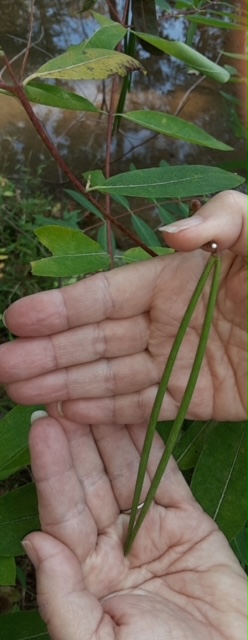
Indian Hemp
(Apocynum cannabinum)
Seed pods are about 5 – 8 inches long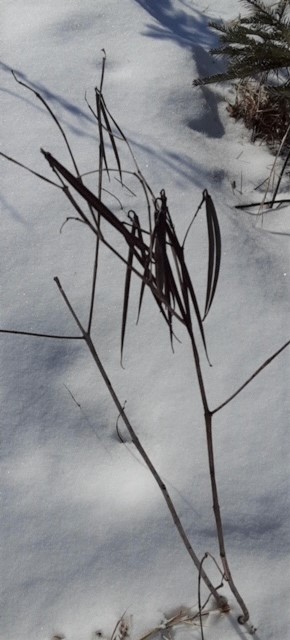
Spreading Dogbane
(Apocynum androsaemifolium)
Seed pods are about 2 inches long.
They look like wishbones hanging down against the snow. We have two native species in our area identifiable in summer by different colored blooms and both attracting bees, moths, and butterflies. They are members of the APOCYNACEAE or Dogbane Family, perennials found throughout North America.
The common name “dogbane” because the white milky sap is toxic to dogs, livestock, us; although it was used as a heart medicine in times past. The common name “Indian Hemp” because its tough fibers were used to make nets and cordage. Surprise! Both names have been used for both plants! See why I like to use scientific names for plants?
Anyway, the one mostly called Indian Hemp (Apocynum cannabinum)is taller, up to four feet, and has longer pods, five to eight inches long. The one mostly called Spreading Dogbane (Apocynum androsaemifolium) is shorter at about two feet with two inch long pods. And the scientific names are the reason why people use common names! Right?
Just look for the pods and think about summer… when these plants’ flowers each put out a pair of long, tapered pods that release fluffy parachutes of seeds into the warm, sunny sky.
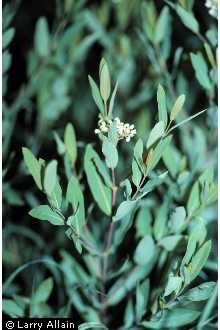
Indian Hemp
(Apocynum cannabinum)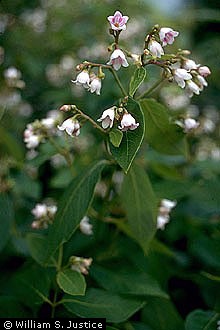
Indian Hemp
(Apocynum cannabinum)
American Chestnut Tree
The American chestnut tree and my recent post, the American beech tree, are both members of the same family, FAGACEAE, or Beech Family. Our native chestnut, Castanea dentata, was a very large tree, up to 100 feet tall with a massive trunk and a broad crown. These trees provided strong, straight-grained wood for building and lots of sweet, meaty chestnuts for humans and wildlife to enjoy.
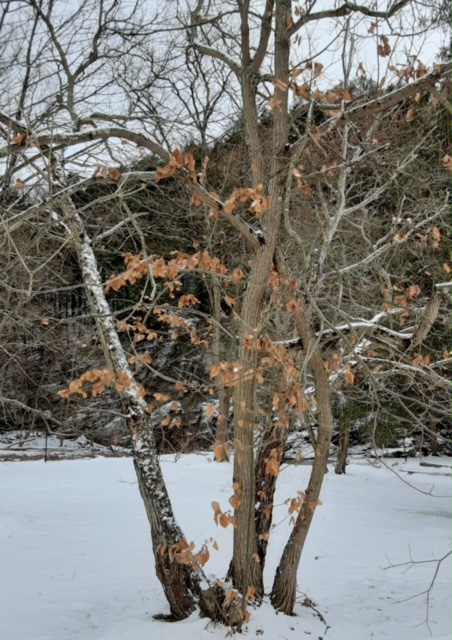
Sadly, an airborne Asian bark fungus was accidently imported in 1904 and spread so rapidly in forty years, it wiped out this once abundant species which had made up a quarter of the Eastern Hardwood forests from Maine to Mississippi. Some say as many as four billion trees were infected, girdled, and killed. Fortunately, their underground roots can survive and put up stump sprouts that may grow long enough to reproduce before succumbing to the blight.
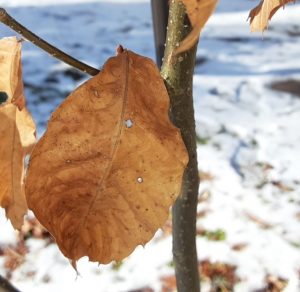
The American Chestnut Foundation is one of many organizations dedicated to creating a blight-resistant American chestnut that can be reintroduced to our forests. Until then, we have stump sprouts which can grow up to thirty feet tall and be identified during the winter because they retain their leaves, like American beech. On your walks or skiing, look back through the woods for brown leaves, five to eight inches long with hooked teeth at the end of each parallel vein and check to see if the tree they are on is part of a group of trunks, coming up from an old tree stump.
Find out what’s underfoot with NPC member and environmental educator, Susan Sprout! Catch up on past issues of Underfoot: Introduction & Bloodroot, Trout Lily & Coltsfoot, Blue Cohosh & Dutchman’s Breeches, Ground Ivy & Forget-Me-Nots, Goldthread & Wild Ginger, Common Mullein & Sweet Woodruff, Aniseroot & Butterfly Weed, Myself , Jewelweed & Soapwort, American Pennyroyal & Great Lobelia, Boneset & Common Ragweed, Pokeweed & Blue Chicory, Prickly Cucumber & Wintergreen, Beech Drops & Partridge Berry, Pipsissewa & Nostoc, Witch Hazel, Plantsgiving, Black Jetbead & Decorating with Winterberry, Wild Bergamot & Bald Cypress Tree, Galls & Bittersweet, American Beech & Bagworm.

